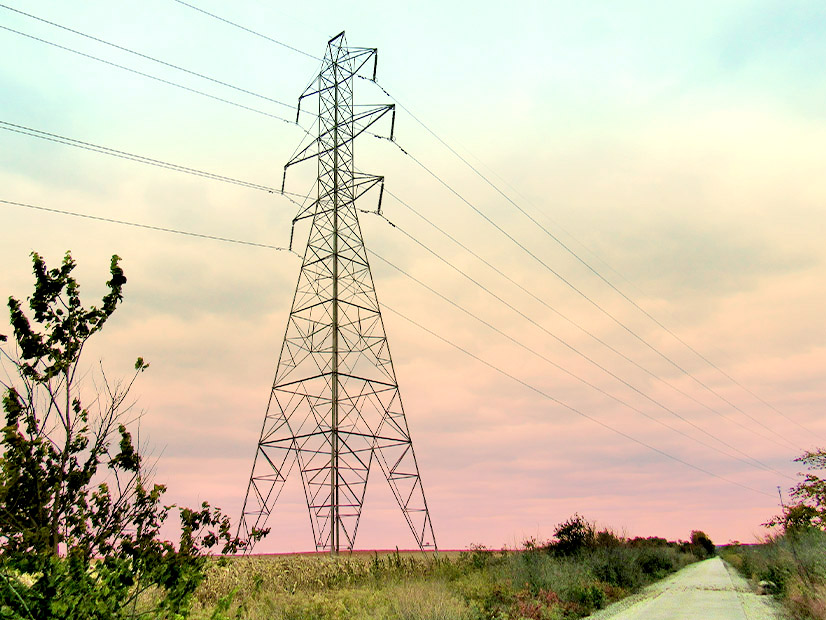An early stage collaboration is intended to bring together communities, tribes, nonprofits, companies, RTOs and government officials from the northeastern U.S. and Canada to increase coordination around interregional transmission.
An early-stage collaboration between the Acadia Center and Nergica is intended to bring together communities, tribes, nonprofits, companies, RTOs and government officials from the northeastern U.S. and Canada to increase coordination around interregional transmission.
Dubbed the Northeast Grid Planning Forum (NGPF), the effort is aimed at changing the conversation around transmission planning throughout the broader region to help unlock infrastructure investments, improved planning processes and market changes to help facilitate the clean energy transition.
“If you look out at what states and provinces are trying to achieve with meeting climate goals,” Dan Sosland, president of the Acadia Center, told RTO Insider, “there is a tremendous amount of potential complementary benefits that could be obtained if we step back and look at how the grids might coordinate in a more intentional way.”
The entire region faces the potential for massive load growth over the coming decades, coupled with significant changes in how and where electricity is generated. Hydro-Québec anticipates its demand will double by 2050, while ISO-NE forecasts its peak load to reach up to 57 GW, compared to the 24-GW peak experienced in 2023.
The transmission investments needed to meet this load growth will be pricey: Hydro-Québec has proposed to invest $45 billion to $50 billion by 2035 to expand its transmission capacity, while ISO-NE has estimated that transmission upgrades needed by 2050 could cost up to $26 billion. (See ISO-NE Analysis Shows Benefits of Shifting OSW Interconnection Points.)
“We need to think about the grid in a different way,” Sosland said, adding that transmission infrastructure throughout the Northeast has been developed largely project by project, leading to projects scattered across the map like “a game of pick-up sticks.”
Meanwhile, several studies have found that increased interregional transmission capacity throughout the Northeast could bring cost, reliability and decarbonization benefits to ratepayers.
The U.S. Department of Energy specifically highlighted congestion issues between New York and New England in its 2023 National Transmission Needs Study, which found the need for an additional 3.4 to 6.3 GW of transfer capacity between the regions in scenarios with moderate load growth and high renewable energy penetration.
Along with resource adequacy benefits as intermittent renewables proliferate, increased interregional transmission capacity “provides resilience and consumer savings during extreme weather events,” the study wrote.
The study cited an analysis by Grid Strategies which found that during the “bomb cyclone” cold snap in the winter of 2017/18, ISO-NE, NYISO and PJM each “could have saved $30 [million to] $40 million for each gigawatt of stronger transmission ties among themselves or to other regions.”
Analyses have also projected significant cost benefits of increased two-way transmission capacity between Quebec and the northeastern U.S., with hydropower balancing out intermittent resources and limiting the need to overbuild clean energy.
One 2021 study found this bidirectional flow could reduce overall power costs by about 5 to 6% on a future grid with high levels of renewables. (See Québec, New England See Shifting Role for Canadian Hydropower.)
Notably, the nonprofits behind the effort represent both sides of the border; the Acadia Center is based in New England, while Nergica is based in Québec.
Frédéric Côté, general manager of Nergica, said one of the key goals of the forum is to help projects that address pressing transmission needs to overcome the hurdles that have caused cancellations and delays in recent years.
Transmission planning historically has occurred “mostly jurisdiction by jurisdiction,” Côté said. “We feel that there is a need to rethink how it is done.”
“Time is of the essence if we want to achieve carbon neutrality by 2050,” Côté said. “We think we need to bring as many people as possible around the table to put together a road map for the region.”
In 2023, a coalition of states launched the Northeast States Collaborative on Interregional Transmission, which has since grown to 10 states. (See Northeast States Detail Early Efforts on Interregional Tx Collaborative.) The NGPF is not intended to replace or be redundant with this collaborative, but instead is aimed at engaging a wider set of communities and stakeholders, the organizers said.
The forum is initially envisioned as three roundtables focused on different themes: environmental justice and community mobilization, interregional planning, and clean energy procurement and markets development.
Reflecting on the recent struggles of projects like the Twin States Clean Energy Link, Côté called for a greater focus on tangible community benefits, as well as on market reforms to better facilitate bidirectional power exchanges across the U.S.-Canada border. (See National Grid Backs out of Twin States Clean Energy Link Project.)
“It’s not that easy to envision bidirectional exchanges in the current market state,” Côté said.
Rob Gramlich, president of Grid Strategies, said there is no “magic bullet” to prevent project cancellations, “but having greater regional buy-in on new lines sure would help.”
“Ideally, we need the key policymakers that are engaged in that forum to have some high-level conceptual agreement on a plan and a way to allocate the costs,” Gramlich said.
The forum’s organizers say they hope to hold in-person roundtables over the coming fall or winter and have met with different stakeholder groups to plan and gauge interest.
“We’re in Phase 1 of really testing ideas and getting input,” Sosland said. “We will then do an internal assessment in early May about whether there’s enough interest and support to expand this into a larger phase.”
While nothing is set in stone, Sosland and Côté said they’re encouraged by the feedback they’ve received.
“We’re getting really exciting responses to this,” Sosland said. “If things proceed, we want to be very optimistic about the interest in moving this into an actual forum, actual roundtables and actual discussions.”


